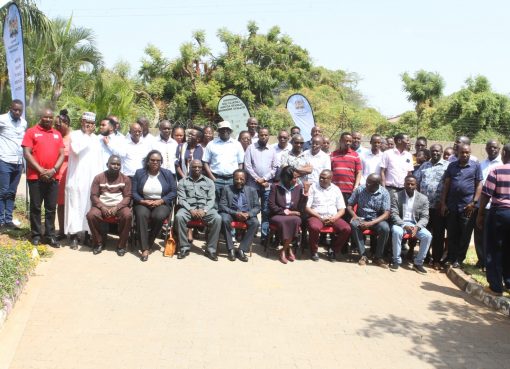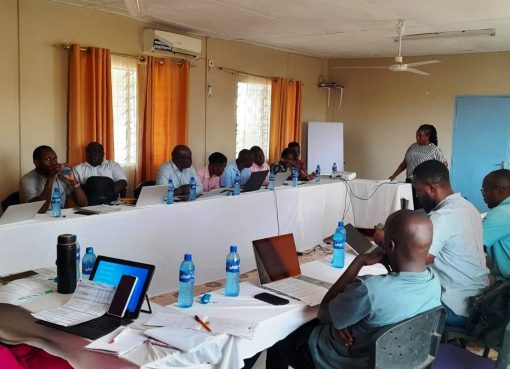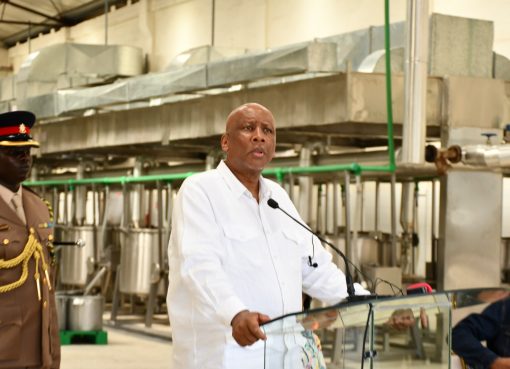Teachers and learners across various primary schools in Uasin Gishu County have praised the Centre for Mathematics, Science, and Technology Education in Africa (CEMASTEA) STEM Outreach Mentorship Programme in the county.
The programme aims at enhancing learners’ and teachers’ creative and innovative skills through Science, Technology, Engineering, and Mathematics (STEM) to enable as many learners as possible to choose the STEM pathway from Grades 10 to 12 that would spur the country into industrial development.
The programme enables learners to find solutions to address real-life problems in society.
CEMASTEA, a state corporation under the Ministry of Education with the mandate to do STEM education, is conducting outreach activities across the counties dubbed STEM on the Wheels, which is well equipped with the basic apparatus needed and models in order to help learners in grades 7 and 8 discover themselves in various learning areas that they have been undertaking in areas of science, technology, engineering, and mathematics.
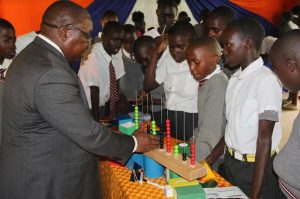
In Uasin Gishu, the team visited four schools across four sub-counties. The schools were Kapsoya Primary School in AinabKoi Sub-County, Ainabtich Primary (Moiben), Kidiwa Primary (Soy), and Kipkaren Road Primary in Kapseret Sub-County.
The teachers expressed gratitude for the outreach, noting that it has enhanced the learners’ potential, especially in STEM subjects, after they realised and knew what they were required to do in regard to STEM subjects, that is, Integrated science, Biology, Physics and Chemistry, Mathematics and ICT.
Madam Beverly Langat, head of the institution, Kapsoya Comprehensive School, pointed out that they have learnt that every learner has potential if given the opportunity to participate.
She observed that teachers must prepare very well in terms of reading and understanding the concepts so that it becomes easier for learners to understand while at the same time ensuring they have the right apparatus and teaching aids for the learners to appreciate the practical experience which they will be able to connect to real-life situations outside the classroom.
“Today has been a good session whereby the teachers prepared first, having all the teaching aids, all the apparatus, and the tools, and involving the learners in the learning process,” noted Madam Langat.
“For example, in physics, there was a generator where the learners were really able to operate it to see that they were able to give light in correlation to the common energy transformations in everyday life,” she added.
In his remarks, Ainabtich Comprehensive School principal, Mitei Joseph, lauded the CEMASTEA, noting that their content was very good because everything is practical, unlike what they usually do, which is pure theory due to lack of equipment, to enable learners to appreciate the practical aspect of STEM and build up a positive desire to pursue the science, technology, engineering, and mathematics subjects.
“CEMASTEA has brought to us something of great benefit, in the areas of mathematics, sciences, and ICT. Practicals were being done, and students interacted with the equipment which they had never interacted with, and that is exactly what we really need, especially in our junior schools at this point in regards to the CBC curriculum,” noted Mr. Mitei.
He indicated that what they have received from CEMASTEA is exactly what they have been missing, as most of their schools do not have the equipment that the Centre brought to take the learners through with, adding that they are not the same as the ones they usually acquire locally from shops.
“Especially things like the microscopes—we have not been having them, ICT equipment, and others—we really feel like the government must invest in this. CBC is about imparting skills and knowledge, and the only way we can do that is by equipping the schools with all the necessary equipment to ensure we are headed in the right direction,” he complained.
He underscored that through the training and mentorship outreach programme, they have really learnt that having the required materials and equipment is very key in teaching STEM subjects and promoting uptake by learners, and at the same time, they discovered that they can still utilise the local materials to use in class to enable students to relate what they are learning with what they usually see in real life.
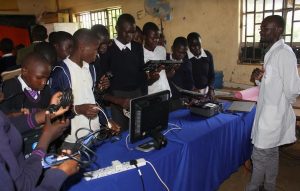
On his part, Samuel Abuga, a teacher at Kapsoya Primary, noted that the students are eager to learn more about integrated science, but the time is limited, as he requested more of these outreaches by CEMASTEA to bolster learners practical experience in STEM, which will go a long way in boosting their attitude in terms of taking up these sciences.
“They are enjoying a lot; they are getting to understand what they are supposed to do on these subjects, which are about practicals; they are getting to touch and doing it practically; subjects like mathematics and integrated science are tangible things; the experience is good; and they are really eager to get new experience,” he said.
He expressed interest in learning more, especially in the ICT area, which he said will enable him to improve on his teaching experience through integrating ICT concepts in delivering content to students through the use of ICT components like computers and projectors to teach.
The learners were taught how to make integrated science, math, and ICT simpler by making use of locally available resources like the use of abacus in math, the separation of mixtures in chemistry, using onion bulbs to appreciate and learn cell physiology using a light microscope, and others.
“In ICT, we learnt about computer programming and how to make a game on a computer; in chemistry, we have learn how acids and bases apply in our daily lives; in physics, I have learnt that there is a small generator called a dynamo; in mathematics, I have learnt how to make mathematics simpler by using an abacus; and in biology, we learnt how to observe a cell of an onion by using a microscope. I want to thank CEMASTEA for coming to our school to teach us more about STEM,” said Medal Gracia Chemutai, a grade 8 learner.
Kelvin Alusimbia said, “We learnt many things from the CEMASTEA. In chemistry, we learnt about immiscible liquids, homogeneous and heterogeneous mixtures, the application of acids and bases in real-life situations; in physics, we learnt about dry cells, how to generate electricity, and how the dynamo is used in generating electricity; in biology, we learnt about the field of view of a plant cell, how the microscope is used, parts of the microscope, and many others.”
He noted that they now have more knowledge of STEM than they had before, noting that if they have the same activities every week, they will be good to go with the STEM pathway.
Brine Kibet, a Junior Secondary School (JSS) learner from Ainabtich Primary, alluded to the fact that the state corporation’s outreach activity has enabled them to acquire practical STEM experience to become creative and innovative, through using locally available resources like a small generator called a dynamo to generate electricity and many others to solve real-life problems in their communities.
In an interview with KNA in Eldoret, during the CEMASTEA STEM on Wheels training and mentorship outreach in Uasin Gishu, Madam Beatrice Macharia, the Team lead, pointed out that the programme is very important because it is really exposing learners to what they should be exposed to with regard to the CBC curriculum.
She noted that through STEM activities, the teachers are able to connect their learners from the theoretical work in class to the practical work.
Madam Macharia explained that the Centre’s main work is in-service education and training for teachers, especially with the junior schools, to help the students during this transition as they move to join junior schools.
“Through this programme, we are bringing the STEM activities to the various schools in the counties, which have already been in other counties. We come with our bus ‘STEM on the Wheels’ with all the requirements so that they interact with our activities, mainly hands-on, to become creative and innovative,” she noted.
She lauded the programme, which has also attracted the interest of teachers who have felt that they should also take part in it. Even if it is intended for learners only, they also need to understand the same activities because they are the ones dealing with the learners.
“They have been attending our sessions; the beauty is that in some areas, instead of CEMASTEA teams explaining, they will even take over and explain to their learners because they feel they may have done the same work theoretically, but with CEMASTEA, we have come with activities like models and apparatus that they have been unable to make, and they have been teaching theoretically,” alluded Madam Macharia.
The Team Lead hinted that teaming up with teachers during the STEM activities plays a crucial role in helping them a lot in terms of improving thinking, creativity, and innovativeness to come up with their own activities and utilising local resources to teach different concepts.
Noting that the government, through the Ministry of Education, targets 60 per cent uptake of STEM in senior school, Madam Macharia indicated that preparation must start early, which is why CEMASTEA has begun the preparation by training teachers of JSS and engaging with the learners with the STEM activities so that they become creative and innovative.
She called on teachers to devise creative and innovative ways of teaching to nurture students to realise that STEM subjects are very simple in order to enable them to have a positive attitude towards them.
“This way, we are trying to pull up that number of 60 per cent to be able to take the STEM pathway. One of the things in ensuring that the learners take the STEM pathway is that the teachers themselves must embrace STEM first, because the main issue is normally an attitude, like many people always say and feel like these are tough subjects. That is an attitude problem,” she explained.
Noting that STEM is an area that everyone should concentrate on, Madam Macharia called on teachers to try and campaign by mentoring learners that these are the simplest subjects they can easily handle and do very well because it is about themselves and what they are doing every day in their daily lives.
By Ekuwam Sylvester



